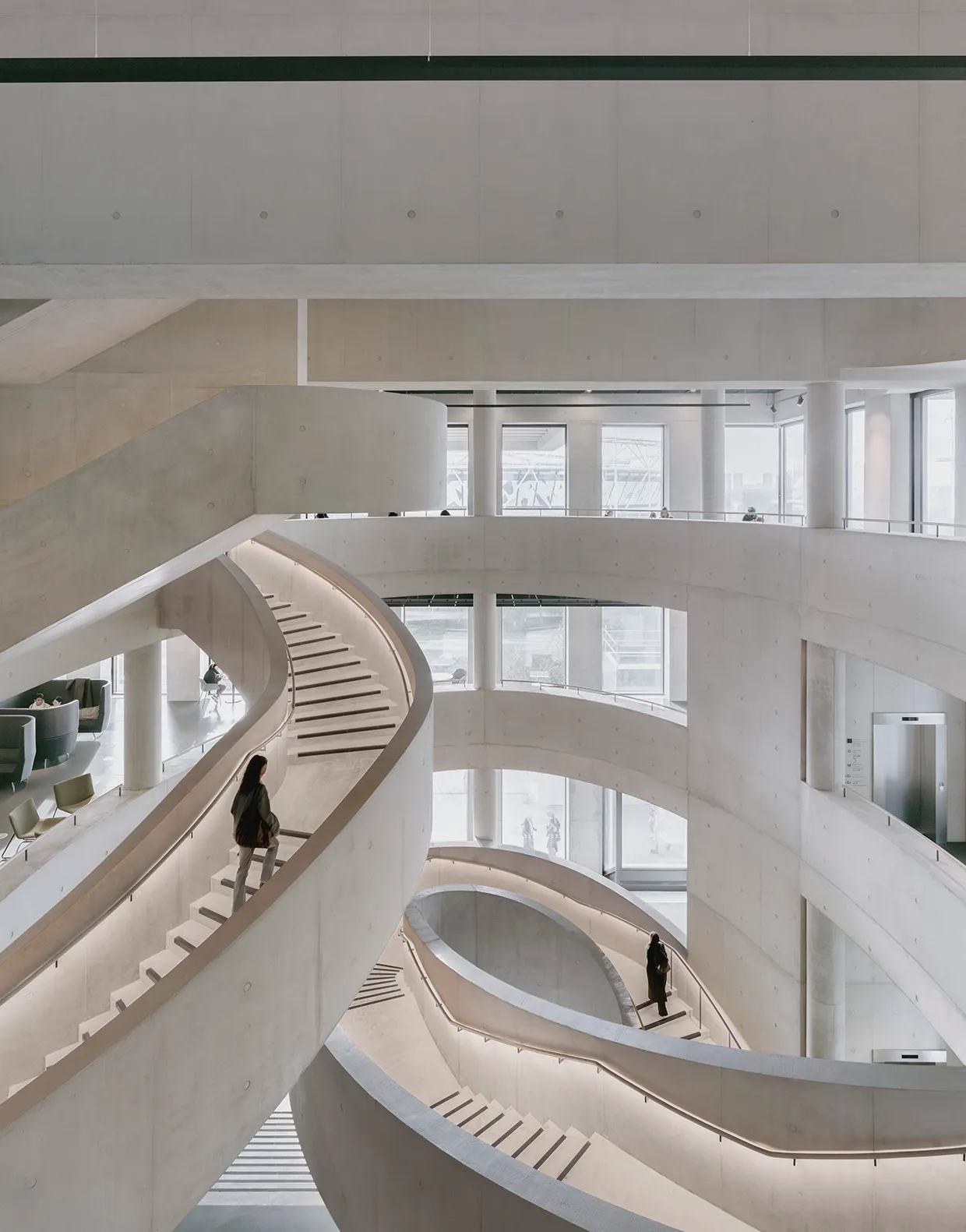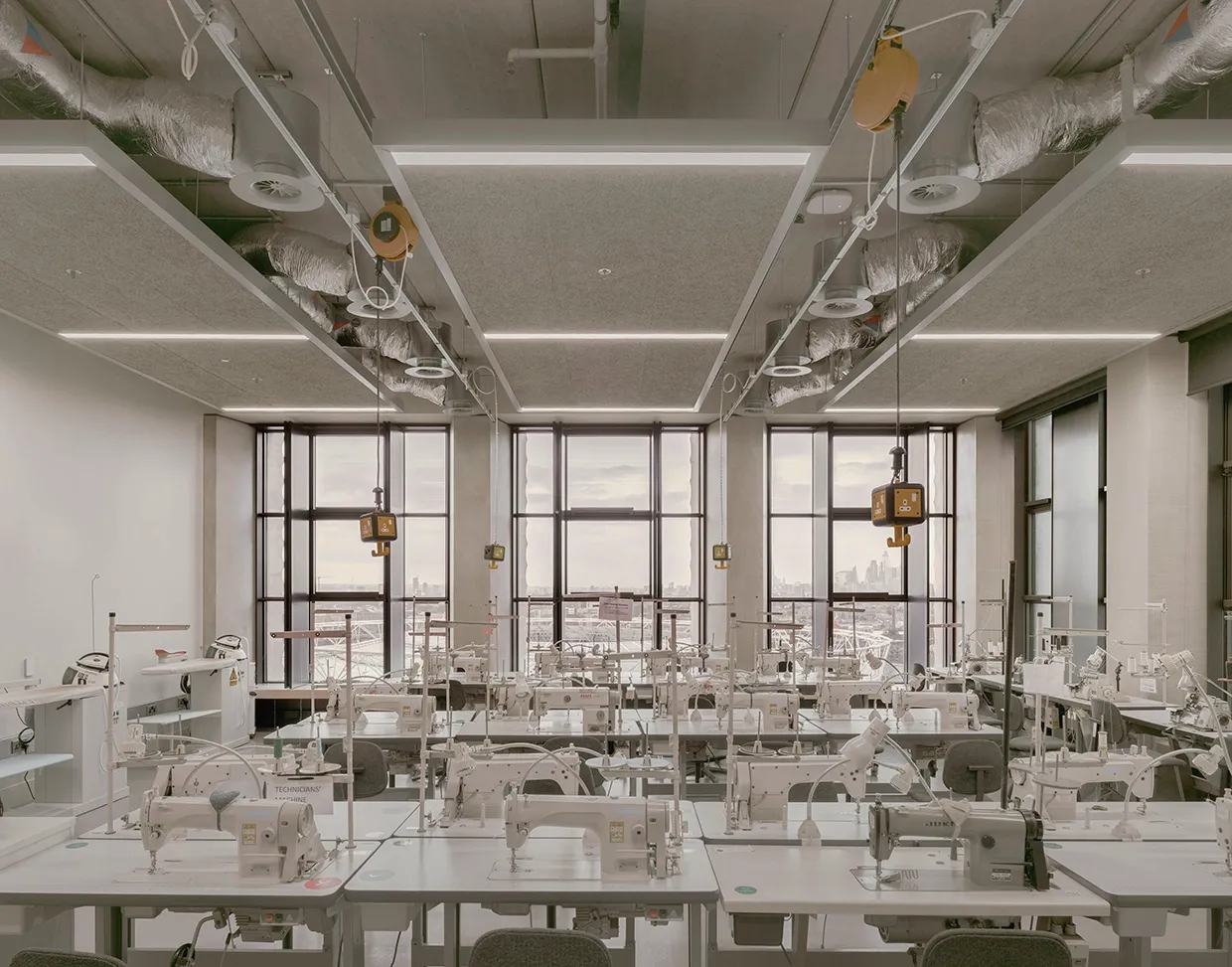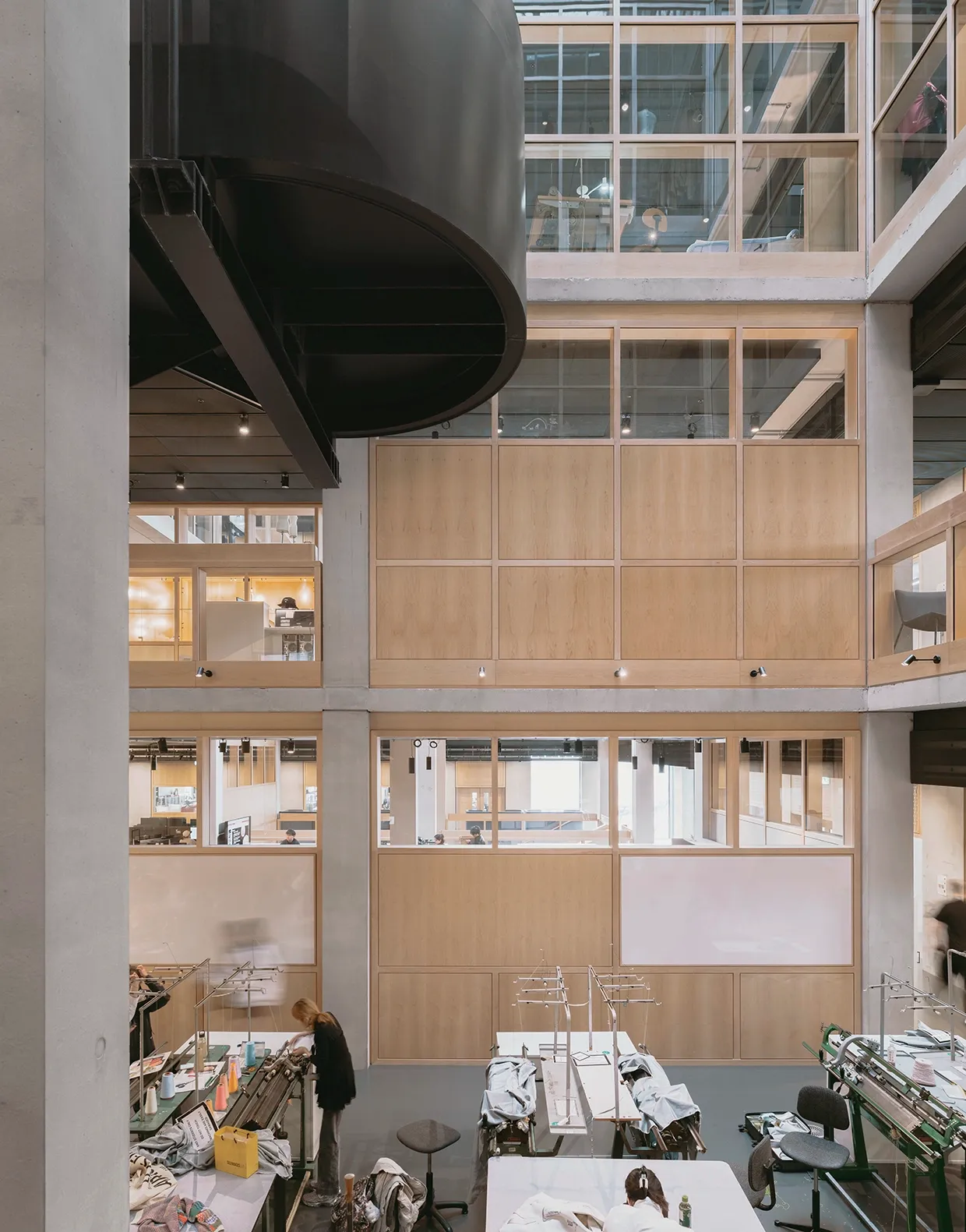Stratford has always been a place in motion, first with the 19th-century Royal Docks and railways, and later with the Olympic Park reimagining its edges into something Hackney Wick hipster-adjacent.
In recent years, the East Bank has undergone a new, future-forward facelift - one muddled together with glass, brick, water and ambition.
With last year’s arrival of the London College of Fashion (LCF), the district has a new landmark: a 17-storey tower that has just claimed the 2025 RIBA London Award, one of the country’s most respected honours in architecture.
For Newham, this accolade is a testament to the work the borough has had done, and the people to whom it is opening its arms.
The fashionable university's move from its former home in Hackney marks a deliberate shift eastward, planting one of the capital’s most influential creative institutions on Stratford’s banks.
Thousands of students and staff now pass through its doors each day, carrying sewing kits, sketchbooks, and fabric rolls, along with the slow, restless promise of what a campus like this can do when stitched into the fabric of a place.
Designed by Allies and Morrison, the new LCF building is a study in understated presence. Maple, concrete and metal form its recurring layers, playing within an architectural discipline where little is wasted and everything is considered.
From the street, it rises sheer and quiet - but unmissable among the still-young skyline of the East Bank.
From the upper levels, the best bit yet, London unfurls: the serrated edge of the city, the glass islands of Canary Wharf, the bend of the Thames catching as the sun dips below its waters.

Winning the RIBA London Award is no small feat, especially in a year that also awarded many UK heavyweights: the brilliantly restored Big Ben, a monument whose chimes have framed stories and generations, alongside the Discovery Centre in Cambridge, a crystal-panelled pavilion of science.
That the award, as well as a nomination for The Stirling Prize, has come to Stratford is telling.
Though it is true the winners were all top models, the jurors look for buildings bound to shape a city's future: they judge their innovation, accessibility, sustainability, and ability to endure not just as architecture, but as part of a living, working urban tissue.

Here, the award recognises something beyond height and a pretty facade. Yes, the LCF campus has been described as the tallest higher education building in the UK, but its verticality is not a spectacle for its own sake, though those of us in fashion do love to do just that.
This was a necessity turned opportunity: a stack of workshops, lecture halls, studios, quiet nooks, and open terraces, each level designed to flex as teaching evolves and the industry it feeds continues to mutate.
Fashion is, after all, a cycle of reinvention, and the building that houses its future practitioners must be no less adaptable.
Inside, one encounters a series of thresholds, then is pleasantly surprised with a view of the Lea Valley spilling past the glazing.

It is a working building, with the smell of dye in the air, the sound of scissors biting into calico, the buzz of sewing machines.
For students used to stepping out of their Hackney door and straight into class, the move may have felt like a displacement, but the new building makes the added distance worth crossing.
Its design is quieter, which perhaps makes it more ground-breaking: a piece of architecture that becomes specific through use, worn in by the people who occupy it day in and day out.
The RIBA jury noted this quality in its citation: “With its new home, the college has broadened the scope of what it teaches, and can stay ahead of ever-changing ways of learning and teaching practice.

"There is a richness of flexible spaces for general learning alongside specialist places for creativity, for practice-based making. From a robust approach to materiality to a dramatic series of interior spaces, it provides a fitting backdrop to the colour of fashion and the charisma of its future creators.
"Here, architecture tailors the college with an identity for generations to come.”
This is not the first time a university has been nominated for the Stirling Prize, as Grafton Architects’ Town House for Kingston University won in 2020. However, it may be the most emblematic of what East London is becoming: a place where cultural powerhouses, alongside twenty-somethings aspiring to be change-makers, are not simply installed but layered into the evolving life of a borough.
For Stratford, the college’s presence adds weight to a cultural corridor already drawing the likes of Sadler’s Wells, the V&A, and the BBC.
It brings students, and by extension, new ideas, collaborations, and economies, to Newham’s streets, cafés, bus stops and night buses.
There are civic questions here, too: who gets to belong in this new architecture? Which histories does it overwrite and which does it carry forward?
Perhaps that is the building’s quietest strength: its ability to act as both a statement of intent and an unfinished conversation.
As the day shifts outside, its windows catch the East Bank changing in the light, always a mirror. Below, the trains keep running, the shopfronts pack up, and Stratford wraps up its day.
Each floor of this new campus is not a neat ending, but another line in the neighbourhood’s ongoing iterations.





